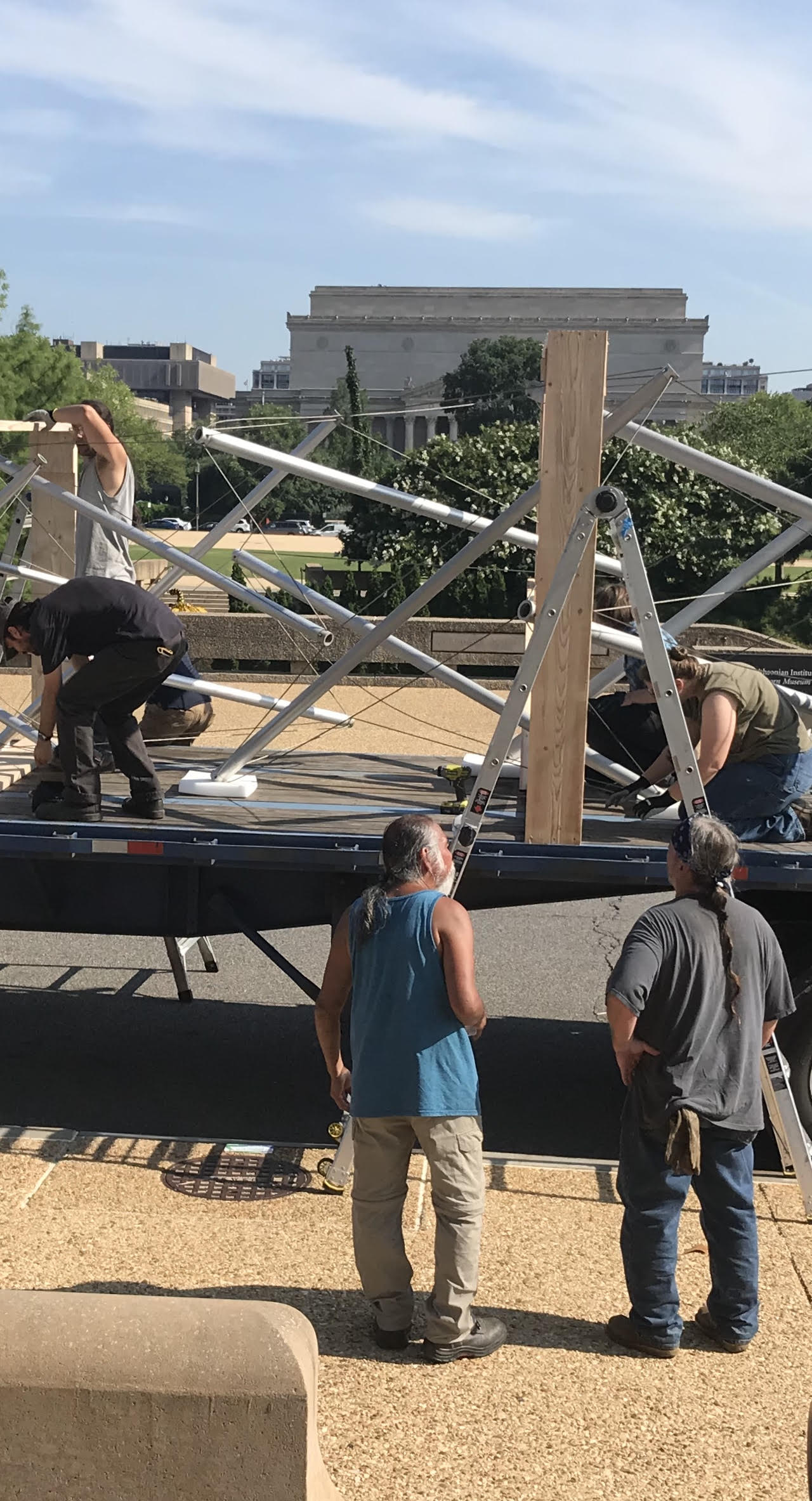
Most never consider what it takes to maintain, transport and display a major work of art. I was lucky enough to be at the Hirshhorn when a crew was removing the Needle Tower by sculptor Kenneth Nelson to make way for an upcoming exhibit.
The tower was created in 1968 and underwent conservation efforts in 2010. The tower is a tensegrity structure made of aluminum and stainless steel and sits more than 60 ft tall. To transport the piece it had to be separated into two pieces. The nature of the construction and the need to keep the halves in proper tension during the effort added to the complexity of the move. A crew of close to a dozen workers was at hand to disassemble and place the work onto a flatbed trailer.
The Needle Tower is one of more than 60 works displayed year round in the museum’s sculpture garden. Opened in 1974, the garden is said to contain one of the most significant collections of modern/contemporary sculpture in the world. I have highlighted Nelson’s work in another post, but this is by far his tallest. The most dramatic view of the piece occurs when one stands directly underneath it and looks up. Although Nelson does not purposely utilize symbolism, from the center the six-sided Star of David is dramatically and powerfully repeated up into the heavens.
It is interesting to consider that when a museum acquires a piece, it also makes an implicit commitment to protect and preserve it for future generations.
The proper handling and conservation of masterworks requires a great deal of research and skill. Fortunately the Hirshhorn and Smithsonian are committed to the highest standards of art conservation. Due to the diversity of modern/contemporary art-making techniques, conservators must analyze each of the artist’s techniques and use of material. When possible they interview the artist so they can accurately preserve the artist’s original creative vision. No two works of art are the same, and each piece must be treated individually and with great care. The Hirshhorn emphasizes analytical research and material science to better understand and preserve these masterworks for our children’s children. The time and treasure devoted to these vital “back of house” efforts would likely shock the average museum visitor. Museum operations are far more complex than most realize.
